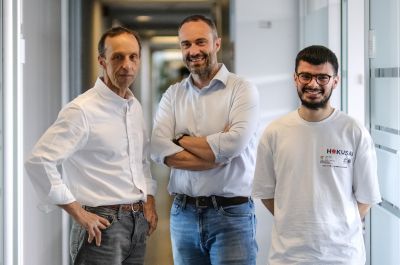
The use of space exploration rovers, which are autonomous vehicles capable of cruising and performing research activities on celestial bodies, actively contributed to the return to the surface exploration of celestial bodies, such as Mars and the Moon. However, the impossibility of direct human action and the limited communication capabilities, particularly concerning Mars, jeopardize mission completion and pose a serious concern about the potential loss of relevant scientific data. Therefore, anomalies and damages must be detected and addressed promptly to increase mission availability by implementing adequate corrective actions.
Given these motivations, growing interest is being posed in the realization of both physical and digital twins by space agencies such as NASA and ESA to test command lines that implement mitigative or corrective actions or to face specific problems. In this context, the DIGES project (DIGital twin di sistemi di ESplorazione lunare) has been conceived, developed, and is now nearing its conclusion, thanks to the collaboration between ASI and Politecnico di Milano. The aim of the project is to develop a digital twin of a rover for space exploration for potential future lunar applications. The project is coordinated by professors Marco Giglio and Francesco Cadini from the research stream “Machine Vehicle Design” of the Department of Mechanical Engineering.
The project focused on developing a digital twin of a rover for space exploration. The goal was to implement a Health and Usage Monitoring System (HUMS) to continuously monitor the rover’s health and maximize mission duration by supporting the decision-making process.
The implemented digital twin is inspired by NASA and ESA rovers, including Spirit, Curiosity, Perseverance for NASA, and Rosalind Franklin for ESA. The modelled rover is powered by solar energy using solar panels and is equipped with batteries for energy storage. Both components are inspired by ESA’s Rosalind Franklin rover. Similarly, based on NASA’s Perseverance rover, the driveline, robotic arm, and thermal regulation system were developed. The latter was subsequently surrogated with machine learning algorithms to reduce computational costs moving towards real-time operability.
To replicate the behavior of a rover under both nominal and anomalous conditions, simulated damages were introduced in the model. These included internal battery short circuits, electric motor short circuits, and solar panel performance degradation. This approach allowed the creation of a database of signals acquired in both healthy and damaged conditions for designing and testing damage detection algorithms, as well as parameter update algorithms for the digital twin, such as the Kalman filter which estimates battery state of charge (SOC) and battery internal resistance causing short circuits.
The developed digital twin can navigate on the lunar surface and collect soil samples using its robotic arm. Various lunar terrain models, including three available on the NASA website, can be used via .stl files. To enhance versatility, ephemerids models and the necessary operations for assessing solar light availability based on the rover’s position on the moon were implemented. Finally, software interfaces were developed to enable communication between the digital twin and potential digital twins of orbiting ground stations.
In summary, the developed digital twin serves both for designing and testing damage detection algorithms and updating digital twin parameters, as well as representing the actual state of the real system during operational phases. It helps test corrective actions to maximize mission duration while avoiding the loss of relevant scientific information.
DIGital twin di sistemi di ESplorazione lunare (DIGES) is a project developed within the implementation agreement n.2021-41-HH.0 within the ASI-Politecnico di Milano framework agreement n. 2016-27-H.0.
